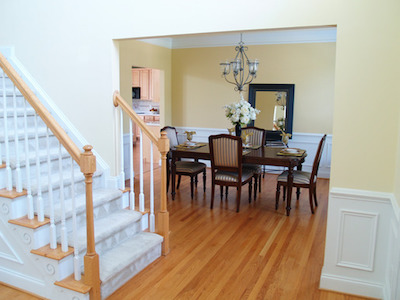Nothing makes a grander entrance than a beautiful staircase leading from the upstairs down into your entryway. The wood. The trim. The carpet.
Yet nothing takes away from that look more than a poorly installed carpet. And not only will it become an eyesore, but it can also be dangerous as well.
From measuring properly to attaching the carpeting firmly into place, there is a lot of room for error in making sure it’s done the right way. Whether it’s a runner or full carpeting, it requires correct installation to keep looking its best for many years to come.
Tackless Strip Mistakes
One of the most important features used to install carpeting on stairs are the tackless strips. They shouldn’t be placed right next to the corner of the stairs. They should also be completely parallel to the crotch of the stairs. A common mistake is to place the tackless strip with upward facing pins instead of leaning them towards the crotch. When using a runner, make sure the tackless strip is cut and placed so the runner extends one inch to either side of the strip.
Padding Mistakes
Never cut the padding in long strips to flow down the stairs. Instead, cut individual lengths for each riser/tread combination of each stair. Also, verify that the padding is cut to size to avoid having to stretch it too tightly. Never using padding to overlap the tackless strip. Instead, cut it so it rests right up against each strip.
Carpeting Mistakes
With a carpeting runner, a common mistake is to neglect to fold each long edge over by scoring it along the backside of the carpet. This makes sure the frayed edges are invisible. Staircase carpeting is installed in one long piece. If you precut it lengthwise, be sure to cut it accurately for the total length, including risers and treads. Another common mistake is cutting it too short, which leaves a seam in a less than perfect location. Also, be sure the staircase is clean and free of debris during installation. Anything that can cause a bubble or a less than perfect installation will show up in the final texture, providing a less than flush appearance from stair to stair. It can also be dangerous, depending on where the problems lie.
